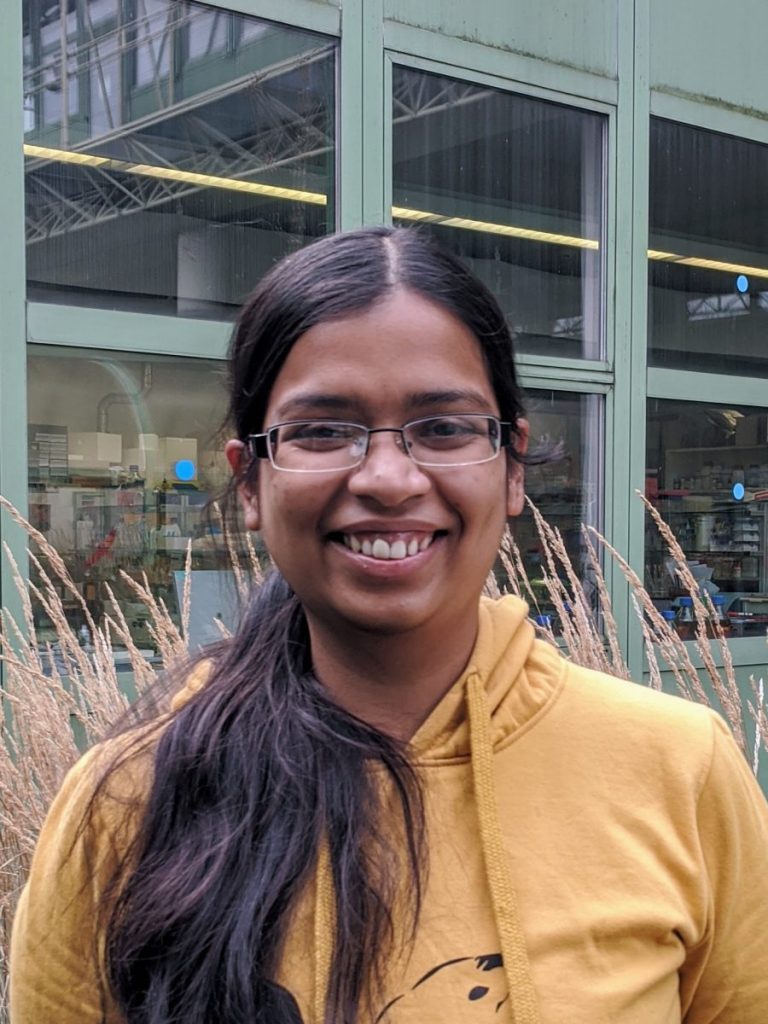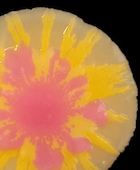We’re really happy to welcome Rupali, a PhD student in Amrita Hazra’s lab in IISER Pune. She is visiting us until Christmas to work on spatial patterning in E. coli vitamin auxotrophs and their interactions with our bacterial community.

We’re really happy to welcome Rupali, a PhD student in Amrita Hazra’s lab in IISER Pune. She is visiting us until Christmas to work on spatial patterning in E. coli vitamin auxotrophs and their interactions with our bacterial community.

Yesterday, Philippe Piccardi became the first PhD graduate of the lab! He gave a beautiful public defense, followed by the best (and first ;)) post-covid party ever! Congratulations Dr. Piccardi!!
Shota’s paper is out in the Journal of Royal Society Interface!! Well done Shota, and a big thank you to Mauro for the wonderful collaboration!
Read more here to find out how fluctuations in environmental conditions together with demographic noise can exclude even the fittest species in some communities, thereby increasing community beta-diversity.
Congratulations to Pablo Guridi for a well-deserved prize! His thesis, submitted in January was judged the best of his year among Master students of Molecular Life Sciences!
Pablo developed mathematical and individual-based models for two projects: drug-delivering bacteria following a circadian rhythm, in the context of the iGEM competition, and bacterial community breeding in our lab. Well done, Pablo!!
We are really excited to be expanding the lab again! Oliver Meacock just started a postdoc to work on exploring how our four oil-degrading species form biofilms. We are looking forward to doing some beautiful microscopy together!
Marina Sudário has also joined the team to set up a very cool experiment involving assembly lines of chemostats with different species. Stay tuned!
Are you looking for a postdoc position to study how different species of bacteria grow together to form beautiful patterns? Want to spend time close to lake and mountains in Lausanne, Switzerland?
The project will involve quantifying biofilms, monitoring biofilm formation using confocal microscopy and studying the role of different species and their environment in spatial pattern formation. We are looking for a motivated candidate with a strong background in microbial ecology and evolution or a related field. Experience with microfluidics, microscopy and/or computational modeling would be a plus.
Apply here before September 1st: tinyurl.com/y4vd8mp9 and do get in touch if you have any questions.

Shota has just posted his latest work to bioRXiv! The work was done through a very fruitful collaboration with Mauro Mobilia, thanks Mauro for all your time and effort!
Shota set up a mathematical model to study how species interact in environments that fluctuate between harsh and benign conditions. His results show that it’s very difficult to predict a priori how the frequency of fluctuations will affect pairwise species interactions. He has found, though, that the strength of these interactions are good predictors of overall species diversity in microbial communities of up to 10 species. Read more here.
Our latest paper is out! Samuele did an amazing job exploring how competition between two bacterial strains growing in a biofilm affects the infection of one of them by phage. The project was originally Philippe’s side-project and he recruited Sarah, who really pushed it forward during her Master project. It would all not have been possible without a great collaboration with Frank and Greg – the two phage experts in our department! Check it out here!
To our great sadness, Flora has been the first postdoc to leave our lab after a very fruitful year. She has also left for a good reason: to take up an independent postdoctoral fellowship in Berlin! The experiments that she has started are nicely rolling now, though, thanks to her great work!
The good news is that we have two new members: Aurore has started a postdoc, and Andrea a Phd. They will both be working on the same project as a team – Aurore will be building theoretical models, while Andrea will do the matching experiments. We are very excited to have them on board!
Our latest pre-print is now available. We report on theoretical work by Shota Shibasaki, where he developed a model to explore public goods games in bioremediation of a toxic compound. The study shows that cheats that do not contribute to the public good can lead to system collapse, but by carefully controlling the system’s evolutionary dynamics, one can maximize detoxification efficiency.